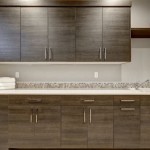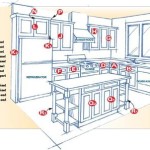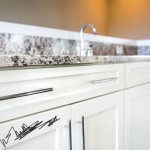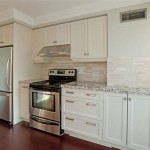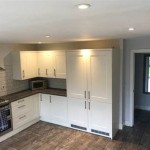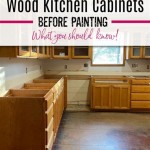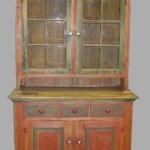What Finish for White Kitchen Cabinets? A Comprehensive Guide
White kitchen cabinets remain a timeless and versatile choice for homeowners seeking a bright, clean, and adaptable aesthetic. The selection of the appropriate finish is crucial, as it directly impacts the cabinets' durability, maintenance requirements, and overall appearance. This article explores various finish options for white kitchen cabinets, delving into their properties, advantages, disadvantages, and ideal applications.
The term "finish" encompasses both the material applied to protect and enhance the cabinet surface, as well as the application method used. A well-chosen and expertly applied finish can significantly extend the lifespan of kitchen cabinets while contributing to the room's overall design cohesiveness. Conversely, a poorly selected or applied finish can lead to premature wear, unsightly blemishes, and increased maintenance demands.
Understanding the Importance of Finish Selection
Selecting the correct finish for white kitchen cabinets is not merely a matter of aesthetics. It’s a critical decision that affects functionality, longevity, and ease of care. The kitchen environment presents unique challenges. Cabinets are consistently exposed to moisture, grease, spills, and temperature fluctuations. A robust finish is essential to protect the underlying wood or composite material from these elements, preventing warping, staining, and other forms of damage.
Furthermore, the finish influences the cabinet's cleanability. White cabinets, in particular, are prone to showing dirt and grime. A finish that is easy to wipe down and resistant to staining will significantly reduce the maintenance burden. The durability of the finish also determines how well the cabinets withstand everyday wear and tear, such as bumps, scratches, and abrasions.
Consider the lifestyle of the household when deciding on a finish. A home with young children or pets will require a more durable and easily cleanable finish than a home with adults only. The overall design aesthetic of the kitchen also plays a crucial role. A high-gloss finish might be suitable for a modern, sleek kitchen, while a matte finish might be more appropriate for a traditional or farmhouse style.
Exploring Popular Finish Options
Several finish options are commonly used for white kitchen cabinets, each possessing distinct characteristics. Among the most prevalent are paint (including lacquer and acrylic), conversion varnish, and thermofoil. Understanding the properties of each finish is paramount in making an informed decision.
Paint: Paint is a versatile and widely used option, offering a broad spectrum of colors and sheens. Within the paint category, acrylic and lacquer paints are particularly popular for kitchen cabinets. Acrylic paints are water-based, making them low in odor and easy to clean up. They also offer good durability and resistance to chipping and fading. Lacquer paints, on the other hand, are solvent-based and provide a very smooth, durable finish. However, they require professional application due to their strong fumes and specialized equipment needs. Paint allows for easy color matching and is relatively simple to touch up if damage occurs.
Conversion Varnish: Conversion varnish is a catalyzed coating known for its exceptional durability and chemical resistance. It forms a hard, protective layer that is highly resistant to scratches, stains, and solvents. Conversion varnish is available in various sheens, from matte to high-gloss, making it adaptable to different design preferences. While it is more expensive than paint, its superior durability often justifies the investment, especially in high-traffic kitchens. The application of conversion varnish typically requires professional expertise to ensure a uniform and flawless finish.
Thermofoil: Thermofoil is a vinyl laminate that is heat-sealed onto a substrate, typically MDF (Medium-Density Fiberboard). It offers a smooth, seamless finish that is easy to clean and resistant to moisture. Thermofoil cabinets are generally more affordable than painted or varnished cabinets. However, thermofoil is susceptible to damage from heat and steam, which can cause it to peel or bubble over time. For this reason, thermofoil is often not recommended for areas near the stove or oven. While initially budget-friendly, the potential for future replacement due to heat damage should be a consideration.
Beyond these main options, other less common finishes may be considered like laminate, which is similar to thermofoil but applied with adhesives rather than heat, or specialized wood stains followed by sealants that allow the wood grain to show through. The choice depends on the desired aesthetic and budget.
Key Considerations When Choosing a Finish
Several factors should be taken into account when selecting the optimal finish for white kitchen cabinets. Evaluating these factors will help ensure a decision that aligns with the homeowner's needs and preferences.
Durability and Resistance: The level of durability required will depend on the kitchen's usage and the homeowner's lifestyle. Homes with children or pets will benefit from a finish that is highly resistant to scratches, stains, and impacts. Conversion varnish and durable acrylic paints are excellent choices for high-traffic kitchens. Thermofoil, while easy to clean, may not be the best option in kitchens prone to high heat and humidity.
Maintenance and Cleanability: White cabinets require regular cleaning to maintain their pristine appearance. A finish that is easy to wipe down and resistant to staining will minimize the maintenance burden. Smooth, non-porous finishes, such as conversion varnish and thermofoil, are generally easier to clean than textured or matte finishes. When choosing paint, opt for a semi-gloss or gloss sheen, as these are more stain-resistant than matte finishes.
Aesthetic Preferences: The finish should complement the overall design aesthetic of the kitchen. High-gloss finishes create a sleek, modern look, while matte finishes offer a more subtle and traditional feel. Consider the interplay between the cabinet finish and other design elements, such as countertops, backsplashes, and hardware. Sample finishes can be tested in the kitchen environment, under different lighting situations, to ensure the desired aesthetic is achieved.
Budget: The cost of different finishes can vary significantly. Thermofoil is generally the most affordable option, while conversion varnish is typically the most expensive. Paint falls somewhere in between, depending on the type and quality of paint used. It's important to balance the desire for a high-quality finish with budgetary constraints. Consider the long-term cost-effectiveness of a more durable finish, as it may save money in the long run by reducing the need for repairs or replacements.
The Role of Sheen in White Kitchen Cabinet Finishes
The sheen of a finish refers to its reflectivity or glossiness. Sheen levels are typically categorized as matte, satin, semi-gloss, and gloss, with matte being the least reflective and gloss being the most reflective. The choice of sheen significantly impacts the overall appearance of white kitchen cabinets and should be carefully considered.
Matte: Matte finishes have a very low sheen, creating a soft, velvety appearance. They are excellent at concealing imperfections and are often preferred for traditional or farmhouse-style kitchens. However, matte finishes can be more difficult to clean than higher-sheen options, as they tend to be more porous and prone to staining. They may also show fingerprints more readily.
Satin: Satin finishes offer a subtle sheen that is less reflective than semi-gloss but more reflective than matte. They provide a good balance between durability, cleanability, and aesthetic appeal. Satin finishes are a popular choice for a wide range of kitchen styles, as they are versatile and forgiving. They offer some resistance to scuffs and scratches, making them suitable for everyday use.
Semi-Gloss: Semi-gloss finishes have a moderate sheen that reflects light well, creating a brighter and more open feel in the kitchen. They are more durable and easier to clean than matte or satin finishes. Semi-gloss finishes are a good choice for contemporary or transitional kitchens. However, they can highlight imperfections in the cabinet surface, so proper preparation is essential.
Gloss: Gloss finishes have a high sheen that is very reflective and creates a sleek, modern look. They are the most durable and easiest to clean of all the sheen options. Gloss finishes are often used in modern or minimalist kitchens. However, they can be prone to showing fingerprints and can be overpowering in some spaces. Proper surface preparation is extremely important with gloss finishes, as they will accentuate any imperfections. They may also require special cleaning products to maintain their shine.
Professional Application versus DIY
The application method is just as important as the choice of finish itself. While some homeowners may be tempted to tackle the finishing process themselves, professional application is often recommended, especially for more complex finishes like conversion varnish or lacquer. A professional finisher has the experience, equipment, and expertise to ensure a flawless and durable finish.
DIY finishing can be a cost-effective option for simpler finishes, such as acrylic paint. However, it requires careful preparation, meticulous attention to detail, and the right tools. Proper surface preparation, including sanding, priming, and filling imperfections, is crucial for achieving a smooth and even finish. It's also important to choose high-quality brushes, rollers, and spray equipment to ensure a professional-looking result.
For cabinet finishes like conversion varnish or lacquer, professional application is highly advised. These finishes require specialized spray equipment and a controlled environment to prevent drips, runs, and other imperfections. The solvents used in these finishes can also be hazardous and require proper ventilation and safety precautions. A professional finisher will have the necessary training and experience to handle these materials safely and effectively.
Even with simpler finishes like acrylic paint, a professional can often achieve a superior result due to their expertise in surface preparation and application techniques. They can also offer advice on choosing the right type of paint and sheen for the specific kitchen environment.

26 White Kitchen Cabinet Ideas Paint Colors And Hardware

Matte Or Glossy Cabinets It S Not Just About Looks Byhyu 112

Choosing The Right Finish For New Kitchen Cabinets Goflatpacks

Why Choose Matte White Modern Kitchen Cabinets Ksi Cuisine Solutions

Gloss Vs Matte Kitchen Cabinets The Pros And Cons

26 White Kitchen Cabinet Ideas Paint Colors And Hardware

Matte Vs Semi High Gloss Kitchen Cabinets Pros And Cons

Q A Choosing Paint Finish Becki Owens Blog

Kitchen Cabinet Finishes For Your Home Designcafe

How To Paint Your Kitchen Cabinets Tips Tricks For A Smooth Finish
Related Posts

